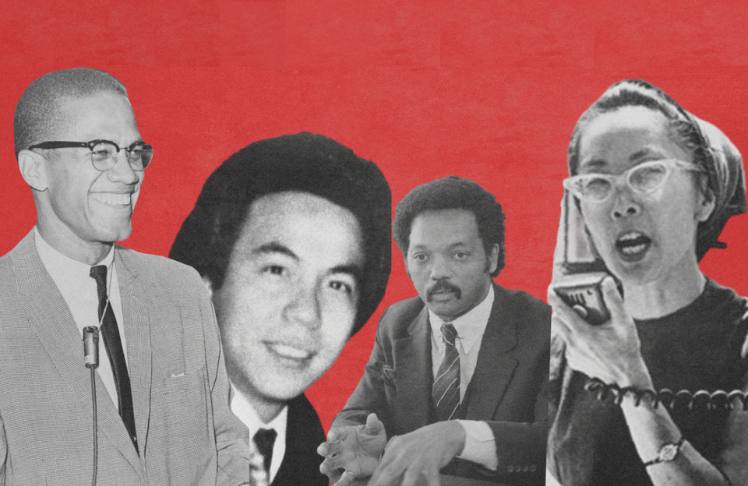
Christine Phan believes people should understand that reports of tensions between Black and Asian Americans, and suggestions that anti-Black sentiment is rampant among Asians, are grossly exaggerated, a distraction to obscure a nefarious agenda.
Listen carefully to reports of Black/Asian discord, she says, and you’ll hear echoes of a racist, divide-and-conquer strategy, enacted long ago, to keep whites atop the social order.
Look closely, she says, at the Supreme Court case that ended affirmative action in college admissions — ostensibly because Black students displaced better-qualified Asians — and you’ll see the fingerprints of white conservatives, whose children will benefit from the ruling.

Focus on the distractions, Phan says, and it is easy to miss the big picture: Black and Asian groups fighting shoulder-to-shoulder against white supremacy. You would miss Asian American-Pacific Islander groups educating themselves and their communities about slavery, Jim Crow, and a shared history of facing discrimination.
And you would look past people like Phan, working to heal the damage racism has inflicted on both marginalized communities and rebuild an alliance that stretches back generations.
“My goal has always been to recognize that our community’s challenges are intertwined — that support is not through any sense of ‘who owes what’ or ‘who deserves this support,’” says Phan, a research analyst with the Asian American Disinformation Table.
“It is understanding that because of the way white supremacy has shaped all of our experiences, standing in solidarity with Black and Indigenous communities is fundamentally necessary to our work and movement.”
That’s why Phan is involved in the Asian American Disinformation Table, a program designed to break through and dismantle centuries of misinformation and disinformation that “bad actors” use to divide communities and disrupt solidarity between Black and Asian communities.
The Asian American Disinformation Table has three primary focuses: building ties with other organizations, strategizing with external partners, and shifting external thinking in the Asian American community, Phan says. That includes bringing in guest speakers for edifying conversations and “identifying the tactics that bad actors in disinformation might use.”
Then, “we figure out how to socialize those ideas in our broader community spaces through messaging strategies and community engagement,” she says. “All the while, we’re building broader coalition ties so that when there are opportunities to get our community to show up and take action,” they’re informed and ready.
Black-Asian solidarity is not new: Frederick Douglass argued against the Chinese Exclusion Act, political activist Yuri Kochiyama was an ally and friend of Malcolm X, and Jesse Jackson stepped away from his presidential campaign in 1992 to protest the murder of Vincent Chin. Japanese Americans’ push for reparations for internment during World War II was modeled on the civil rights movement of the 60s and 70s.
Yet despite this shared struggle, divergent goals and interests “sets our two communities apart and pits us against each other,” Phan said. Since arriving on the continent, she says, “some Asian Americans have aspired to be recognized as white, viewing proximity to whiteness as affording them certain safety and privileges.”
In 1923, for example, an Indian Sikh man argued that he should be classified as a “free white person,” allowing him U.S. citizenship. A few years later, a Chinese American family asserted that their American-born children could attend a white school because they were not Black.
But in recent years, Phan says, the AADT is working to repair those divisions and focus on commonalities and shared interests. That involves tackling tropes and stereotypes head-on and keeping the big picture — inequality, bigotry, and disinformation, in service of white supremacy — front and center.
“It is not just about lies. It is about power and an attempt to disrupt solidarity and maintain the status quo,” she says. “Racialized disinformation perpetuates and gives rise to inequalities, seeks to consolidate power among ruling classes, and sustains white supremacy. It can also be weaponized to disrupt cross-racial solidarity among different communities and ultimately uphold the tenets of white supremacy power structures.”
But healing must occur for the two communities to work effectively together, she says. And that can’t happen without education.
“There are so many ways that learning can help our communities heal,” Phan says. “For one, older generations in diaspora communities tend to not understand the context or history of racism in the US, leading them to easily believe harmful lies, especially those aimed at driving a wedge between us and other marginalized communities.”
To reverse that, “many of those in the anti-disinformation space are leading efforts to provide educational resources that are tailored to individual ethnic communities and often in-language as well,” she says. “Getting our communities access to information they need to understand the oppressive structures that govern our lives is one step closer toward collectively overcoming these structures.”
Phan continues: “In the disinformation universe, what we’re looking at and beginning to understand is that all of our bad actors are intertwined, that they’re well-funded enough to amplify their messages, and that they leverage the same exact tactics against both of our communities.
“The same exact playbook is being used against both Black and Asian communities,” she says. “So if we don’t stick together, the playbook that wins against one of our communities will absolutely win against the other.”
This story was produced in partnership with the W.K. Kellogg Foundation.















